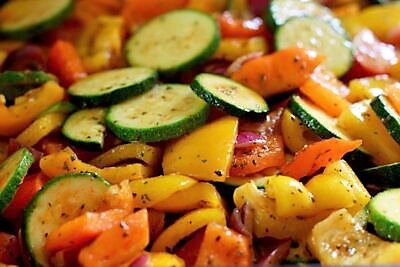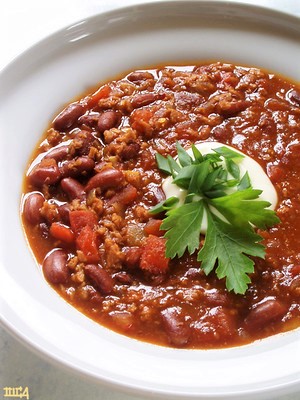
Americans are spending more money at the grocery store. According to the Bureau of Labor Statistics, food prices were 9.4% higher in April 2022 than in April 2021 – the largest annual increase in 41 years.
The battle for your wallet is fought at the dinner table, where the desire for convenience and comfort duel against flavor, nutrition, and cost.
Small changes like fewer and larger shopping excursions to stores where bulk buys are discounted, a meatless Monday (or any other day of the week) tradition, a weekly cook-ahead session, and a better understanding of what to keep in the pantry or freezer can help curb costs and/or reduce the need for impulse dinner buys on busy work nights.
 Let MSG help. MSG (monosodium glutamate, aka “umami seasoning”) amplifies and enhances the flavor of foods – whether it is naturally occurring or added to foods. Here are 3 suggestions on ways to healthfully stretch your food budget – with assistance from MSG – without sacrificing taste.
Let MSG help. MSG (monosodium glutamate, aka “umami seasoning”) amplifies and enhances the flavor of foods – whether it is naturally occurring or added to foods. Here are 3 suggestions on ways to healthfully stretch your food budget – with assistance from MSG – without sacrificing taste.
Cook Once, Eat Twice
If you’re not familiar with the term, it means that you cook one meal and then deliberately schedule the leftovers for another meal. It’s planning to repurpose leftovers. If you’re not a leftover lover, no worries: you don’t eat the same meal twice!
Wasted food is wasted money. When you have a plan for leftovers, it helps ensure that you will use them. Cook once, eat twice lets you take advantage of value packages of meat and other store sales that would make too much for a single time use. Having a second meal planned also means you have a quick and easy meal almost ready on a night when you’d usually spend more money on takeout.
Pot roast is one of my go-to money and time savers. A chuck roast on sale does double duty: first time on top of mashed potatoes, then later in the week as a sandwich stuffed into a fresh crusty kaiser roll. For those away from home all day, pot roast is an excellent choice for a crock pot meal, as you can do the prep work ahead of time, then set it, and forget it.
Here’s a recipe that uses MSG to add extra flavor to this favorite comfort food.
You Can’t Have Too Many Vegetables
 The federal government’s Dietary Guidelines for Americans call for adults to eat about 2 to 3 cups of vegetables per day. And research has shown that 90% of Americans do not meet that goal. But with careful meal planning, smart shopping, and a few tweaks in storage and preparation techniques, you can make the most out of your food budget by always including vegetables in your meals. They’re a healthy value for the money.
The federal government’s Dietary Guidelines for Americans call for adults to eat about 2 to 3 cups of vegetables per day. And research has shown that 90% of Americans do not meet that goal. But with careful meal planning, smart shopping, and a few tweaks in storage and preparation techniques, you can make the most out of your food budget by always including vegetables in your meals. They’re a healthy value for the money.
Veggies often receive the wrong end of the carrot stick when they’re served up raw, eliciting a chorus of “yuk” from vegetable-averse eaters. But roasting is an easy way to transform them into nuggets of sweetness. Broccoli, cauliflower, carrots – or whatever vegetable is your favorite – can turn into a super-simple side dish when roasted (frozen – out of season – works too!). Afterwards, use whatever is left in new ways: frittata, breakfast sandwiches (eggs, veggies, cheese) and veggie chili.
Here’s how to make tasty roasted vegetables with help from MSG.
For tips on how to get the most for your dollar from veggies:
Meatless Monday (or Tuesday, or Any Day)
Whether you’re having trouble sourcing or paying for meat, or you’ve been thinking about exploring a more plant-based diet, now is a good time to pivot to some meatless meals or try out strategies for stretching out the meat you do buy. Although beef, chicken and pork provide protein, iron and zinc, these nutrients can be found in a wide variety of other foods, such as low-cost legumes like beans, lentils and soy. These environmentally sustainable options are also rich in fiber, which many Americans fall short of.
 Beans make very tasty substitutes for meat. Canned beans cost about 9 cents per ounce; dry beans, which are less expensive at about 7 cents per ounce, require more finessing. Beans can then be used in chili, soups, dips (such as hummus or spicy black bean dip), atop salads, in burger patties, as a filling for burritos and stuffed peppers, in curries or mixed with pasta, quinoa or rice. In just about any recipe MSG is a good replacement for some of the salt that is added as seasoning while cooking. Try substituting MSG for 1/3 of the salt you would normally use and then adjusting the amount based on you and your family’s preferences.
Beans make very tasty substitutes for meat. Canned beans cost about 9 cents per ounce; dry beans, which are less expensive at about 7 cents per ounce, require more finessing. Beans can then be used in chili, soups, dips (such as hummus or spicy black bean dip), atop salads, in burger patties, as a filling for burritos and stuffed peppers, in curries or mixed with pasta, quinoa or rice. In just about any recipe MSG is a good replacement for some of the salt that is added as seasoning while cooking. Try substituting MSG for 1/3 of the salt you would normally use and then adjusting the amount based on you and your family’s preferences.
Here’s an easy recipe for meatless chili.
For more on Meatless Monday, visit MondayCampaigns.org.
Health Food Choices Don’t Have to Cost a Lot
Use this tool to find cost-saving opportunities in your local area and discover new ways to prepare budget-friendly foods.
Vegetarian chili photo courtesy of Flickr user Olga.

